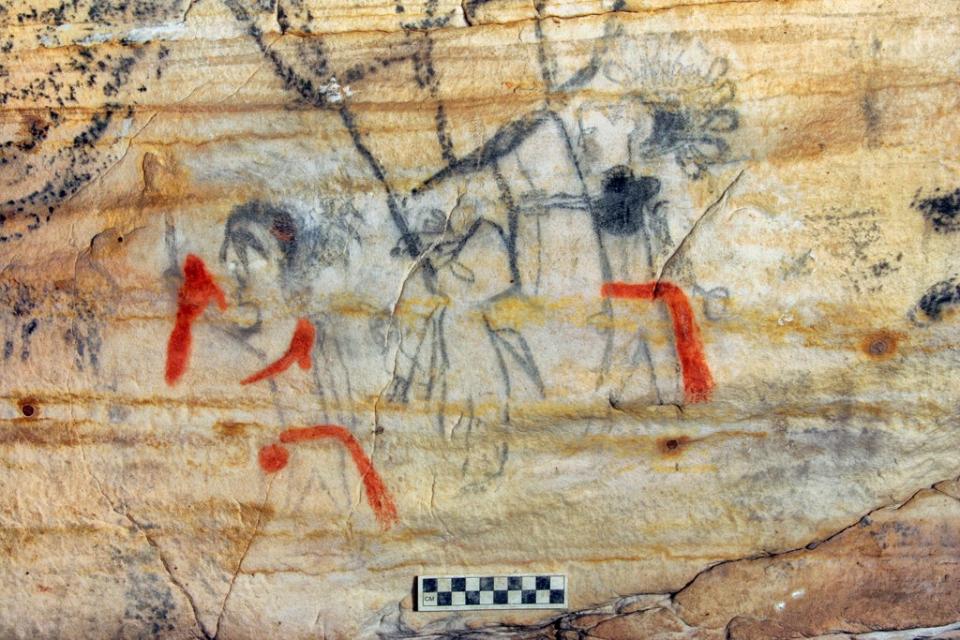Secret buyer outbids tribe to buy cave with Native American artwork

A secret buyer paid $2.2m for a cave featuring ancient Native American artwork at an auction on Tuesday, outbidding the tribe that wanted to preserve the “sacred site”.
Osage Nation, the American Indian tribe whose ancestral domain included much of Oklahoma, said in a statement that the sale was “truly heartbreaking”.
“Our ancestors lived in this area for 1,300 years,” the statement read. “This was our land. We have hundreds of thousands of our ancestors buried throughout Missouri and Illinois, including Picture Cave.”
The bidder, who sought anonymity, bought the Picture Cave along with 43 acres of hilly property surrounding it near the town of Warrenton in Missouri, said Bryan Laughlin, the director of Selkirk Auctioneers & Appraisers.
Carol Diaz-Granados and her husband James Duncan, who spent 20 years researching the cave and wrote a book about it, also opposed the auction.
“Auctioning off a sacred American Indian site truly sends the wrong message,” Ms Diaz-Granados, a research associate at Washington University in St Louis said. “It’s like auctioning off the Sistine Chapel.”

The caves were mainly used for hunting by a St Louis family that owned the land since 1953.
The caves have the largest collection of Indigenous people’s polychrome paintings in Missouri with more than 290 prehistoric glyphs, or hieroglyphic symbols used to represent sounds or meanings. The cave was the site of sacred rituals and burials, according to the auction website.
The cave also featured drawings of people, animals, birds and mythical creatures.
Ms Diaz-Granados said charred botanical material was used to create the drawings. “You get stick figures in other rock art sites, or maybe one little feather on the top of the head, or a figure holding a weapon,” she said. “But in Picture Cave, you get actual clothing details, headdress details, feathers, weapons. It’s truly amazing.”
The pigment samples from the artwork were found to be at least 1,000 years old by analytical chemists from Texas A&M.
But the cave’s history is even older, dating back to the 1700s, when European explorers visited the site, according to Mr Laughlin. The cave reportedly has the names of ships’ captains and crew members on the walls.
Though concerns were being raised over the protection and preservation of the site, Mr Laughlin said he believed that the cave would be respected as before because his firm had vetted the buyers.
He also referred to local laws. According to Missouri Revised Statute 194.410, any person or entity that “knowingly disturbs, destroys, vandalises, or damages a marked or unmarked human burial site commits a class D felony.” The statute also makes it a felony to profit from cultural items obtained from the site.
He added that it was difficult to reach the site, which will further help protect the cave. "You can’t take a vehicle and just drive up to the cave,” Mr Laughlin said. “You have to actually trek through the woods to higher ground and go through a 3-foot-by-3-foot opening that’s secured by the Missouri Historical Society with steel bars.”
Ms Diaz-Granados, however, is still hoping that the new owner donates the cave to Osage Nation. “That’s their cave,” she said. “That’s their sacred shrine, and it should go back to them.”

 Yahoo News
Yahoo News 